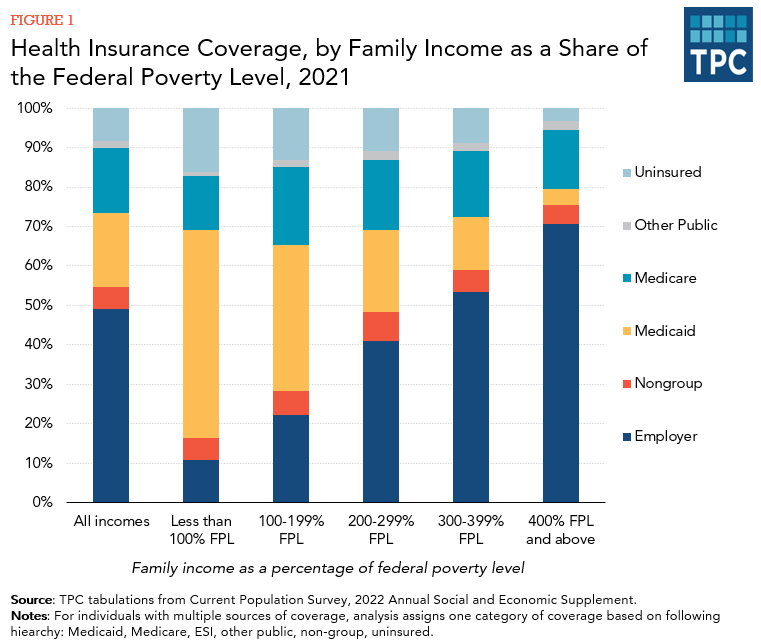Over 90 percent of individuals were covered in 2021, with higher coverage rates for those with higher incomes.
In 2021, 49 percent of the U.S. population obtained health insurance coverage through employment (figure 1). Another 6 percent purchased coverage on their own in the private market, while about 19 percent were covered by Medicaid, 16 percent were covered by Medicare, and 2 percent had coverage from other public sources. That left 8 percent uninsured.

Just over 16 percent of the individuals with family incomes below 100 percent of the federal poverty level had private coverage in 2021; 16 percent reported having no health insurance, public or private. In contrast, 75 percent of those with incomes above 400 percent of the federal poverty level had private coverage, and just 3 percent had no insurance.
Health insurance coverage may decline in the coming years due to the expiration in 2023 of policies adopted during the COVID-19 public health emergency. Medicaid enrollment increased during the pandemic due to federal legislation preventing state Medicaid programs from disenrolling people during the public health emergency. The Urban Institute’s Health Policy center projects the expiration of the continuous coverage requirement could eventually increase the number of uninsured by up to 4 million people (increasing the percent of the population without insurance by about one percentage point).
Updated January 2024
Buettgens, Matthew and Andrew Green. 2022. “The Impact of the COVID-19 Public Health Emergency Expiration on All Types of Health Coverage.” Washington, DC: Urban Institute.